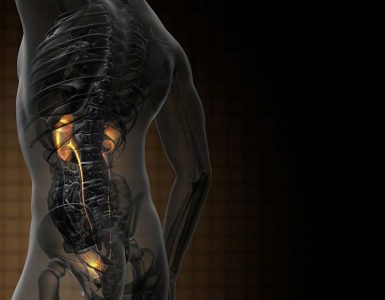Oil palm is a significant plant and carries many advantages. Oil palm fronds (OPFs) are a waste product of palm oil production. These products can be efficiently be utilized as animal feed, as they contain important nutrients in huge amount. But, unfortunately, application of palm fronds as feed is restricted due to presence of high lignin content in them1,2.
Phanerochaete chrysosporium can be used a potential agent to solve this issue. It is a white rot fungus having the capability to degrade lignin3. But, its growth and development gets restrained in the absence of the calcium and manganese. However, adding these minerals during fermentation of oil palm frond by means of P. chrysosporium can lead to greater digestibility of dry matter, organic matter, fibers as well as cellulose. Furthermore, it also produces the highest amount of volatile fatty acids as well2.

By mixing OPFs with P. chrysosporium as well as Ca plus Mn can break down lignin. Moreover, supplementation of these FOPFs with P, S and Mg amplify the manufacturing of microbial protein as well as enhance the volatile fatty acids (VFA) concentrations1.
Phosphorus (P) is an important element that is required for proper functioning of animal’s tissues, bones and rumen microbes and sulfur is a part of the cysteine (amino acid). It serves as a precursor for other S-containing amino acids4. Whereas, magnesium plays a significant role as an extracellular ion for nerve transmission5 as well as it is a vital mineral in ruminants6.
Therefore, a new research was conducted to assess the impacts of supplementation with phosphorus, sulfur and magnesium in goat rations containing fermented oil palm fronds, fermented with Phanerochaete chrysosporium regarding nutrient digestibility. In this study, researchers followed randomized block design by using five treatments with three replications and then examined the digestibility of the nutrients in goats7.
This experiment revealed that phosphorus, sulfur as well as magnesium are crucial for proper growth and performance of rumen microbes. It was found that administration of 40% FOPF, in combination with phosphorus, sulfur and magnesium in goat rations exhibit the maximum nutrient digestibility.
Conclusively, this research will assist other scientists to understand that supplementation with the minerals P, S and Mg is significant to support metabolic processes, growth as well as microbial activity and to enhance the digestibility of nutrients.
Key words:
Oil palm fronds, lignin content, Phanerochaete chrysosporium, volatile fatty acids, nerve transmission, nutrient digestibility, microbial activity
References:
- Febrina, D., 2016. Utilization of oil palm fronds biodelignification products using Phanerochaete chrysosporium as substitute forage on goat. Ph.D. Thesis, Faculty of Animal Science, University of Andalas, Padang, Indonesia.
- Febrina, D., N. Jamarun, M. Zain and Khasrad, 2016. Effects of calcium (Ca) and manganese (Mn) supplementation during oil palm frond fermentation by Phanerochaete chrysosporium on in vitro digestibility and rumen fluid characteristics. Pak. J. Nutr., 15: 352-358.
- Baldrian, P., 2003. Interactions of heavy metals with white-rot fungi. Enzyme Microb. Technol., 32: 78-91.
- NRC., 2000. Nutrient Requirements of Beef Cattle. 7th Rev. Edn., National Academic Press, Washington, DC., USA., Pages: 242.
- Kronqvist, C., 2011. Minerals to dairy cows with focus on calcium and magnesium balance. Ph.D. Thesis, Swedish University of Agricultural Sciences, Uppsala, Sweden.
- Underwood, E.J. and N.F. Suttle, 1999. Magnesium. In: The Mineral Nutrition of Livestock, Underwood, E.J. and N.F. Suttle (Eds.). Chapter 6, CAB International, UK., ISBN-13: 9780851991283, pp: 149-184.
- Dewi Febrina, Novirman Jamarun, Mardiati Zain and Khasrad , 2017. Digestibility of Goat Rations Containing Fermented Oil Palm Fronds by Phanerochaete chrysosporium Supplemented With Phosphorus, Sulfur and Magnesium. Journal of Biological Sciences, 17: 298-304.
















Add comment